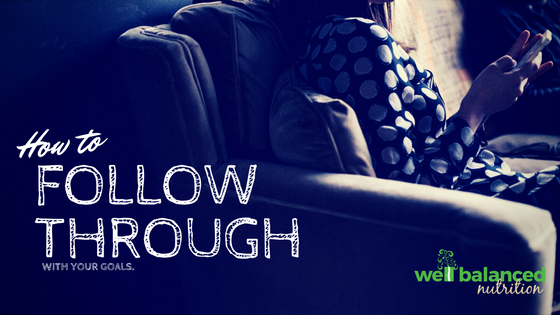
by Lucy | Aug 9, 2017 | Well Balanced Wisdom
“I’m going to do better,” you say. “I need to lose this weight and I’m starting today.” “I’m so out of shape, I’m going to join the gym.”
How many times have you said something like this to yourself without following through? Or maybe you did, but it only lasted a day, because things like this happen….
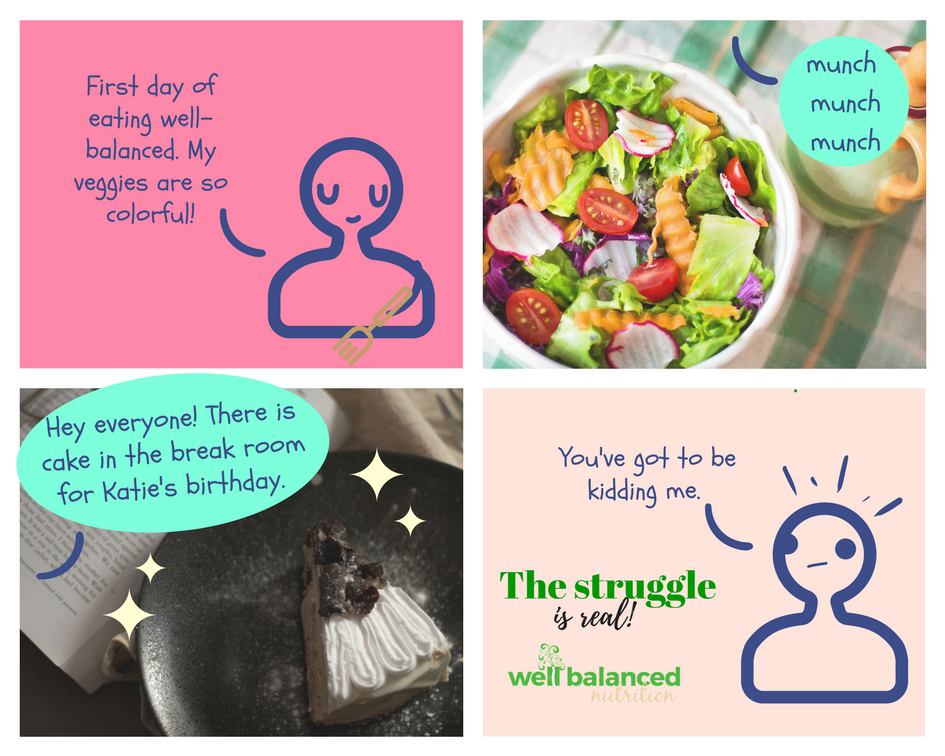
We all want to do better. It’s just not always easy getting there.
When clients come to see us at Well-balanced Nutrition it’s often not about what they need to do. They show up knowing what to do. They just can’t make it happen on their own. Maybe, just maybe, they think to themselves, there is a secret solution they can share with me so I can finally do this. That’s true, we have a few secrets to making healthy changes, but they might not be what you think.
Why is it so hard to follow through with our goals?
Because they come from within and nobody else knows about them. Many people respond to outside expectations and make them a priority, while their inner expectations fall quickly to the wayside. For example, you may want to meal prep on Sunday, but then you get asked to help someone move or your boss gives you a new assignment you want to get ahead start on. So you choose the activity that involves others’ expectations over fixing your meals for the week. Gretchen Rubin, the author of Better Than Before, classifies people like this as obligers. She says, “for Obligers, accountability is crucial. Key. Necessary! If you’re an Obliger, external accountability is the element that will allow you to follow through.” There you have it. One of our secrets to successful change.
So, are you an obliger?
If you could relate to the above scenario or if you are a person who really needs deadlines and late fees to keep you on top of things, there is a good chance that you also need similar accountability with your health habits. When people learn that they are an obliger, many are relieved. They realize it’s not their fault for letting themselves down, putting others first, nor lacking “willpower” to make a change. It’s just the way they are wired. So if you would call yourself an Obliger, instead of blaming yourself for not following through… again, this time set up some outside accountability that will ensure you make the change you desire.
Accountability: The obligation of an individual to account for their activities, accept responsibility for them, and to disclose the results in a transparent manner.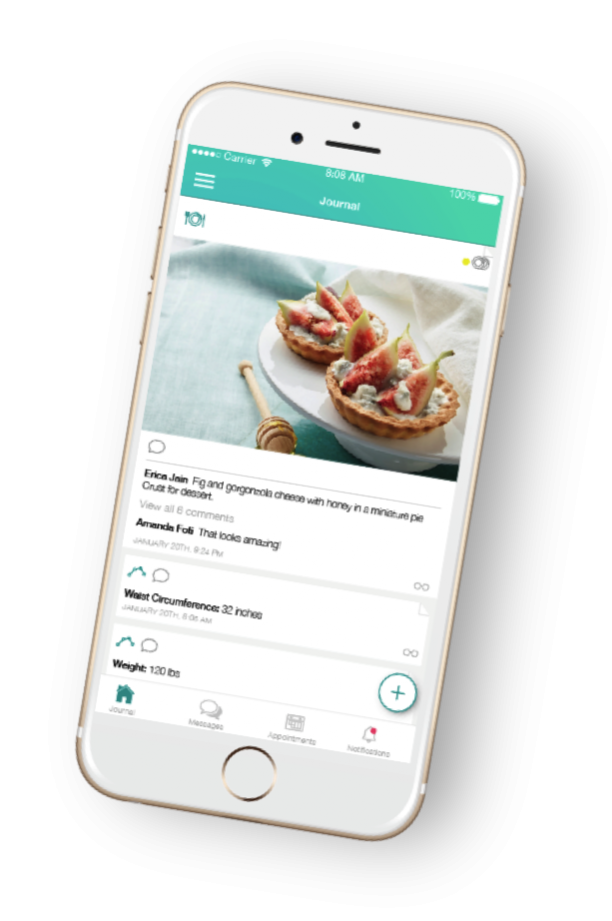
Which types of accountability will you try?
Here are some ideas:
The scale (regular weighing), your Well Balanced dietitian, your coworkers, your BFFs, your doctor, your food journal, your weight loss group, your fitness buddies, clothes you want to fit into…
There’s an app for that:
It’s never been easier to get accountability from your favorite dietitians here at Well Balanced Nutrition. 😉 We just launched an upgraded version of our
Healthy Habit Tracker and Obligers are going to love it! It allows you to track and share with us your:
- food journal
- exercise
- steps (syncs up with your fitbit)
- weight
- measurements
- Healthy Selfies or before and after shots
The best part is you can try using the Tracker for one month at no cost when you sign up in August (no tricks, contracts, or obligations – we promise!).
So, start today because we know how much you want to make that change and how hard it can be to do it on your own. Let us encourage you along the way. We bet you finally follow through with those goals!!
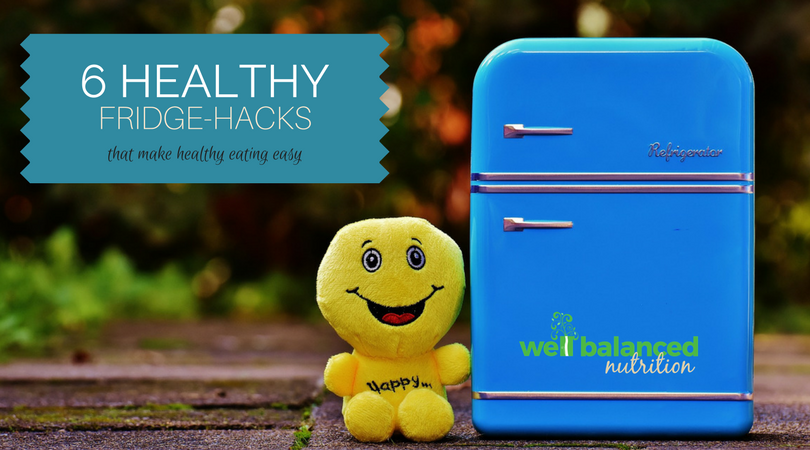
by Lucy | Apr 19, 2017 | Well Balanced Wisdom
Your food environment can set you up for success or it can make healthy living a struggle. Last week, we gave you a checklist for your countertops and your pantry. In part TWO of the spring cleaning series, we have a checklist for your FRIDGE.
It’s all about visibility and convenience. The most visible foods are the ones we eat first. Research tells us that we are 3 times as likely to eat the first thing we see then the 5th. So, if there is any question at all, you’re going to choose that piece of chocolate that is front and center of your fridge instead of the veggies hidden in the back or in a drawer – the beer drawer as Lucy calls it. =)
Here are 6 fridge-hacks that will make your fridge your friend. You can choose to do them all or tackle one at a time, it’s up to you!
1. Take the veggies out of the crisper drawers and place them at eye level. Put the less healthy items in the drawers. When people did this for just one week, they reported eating almost 3 x as much produce as they did the week before.
2. Better yet, cut them up first. Making fruits and vegetables convenient to grab-and-go increases your chance of eating them. Keeping a bunch of oranges in your fridge is one thing, but cutting them up so they can be devoured quickly makes them even more attractive.
3. Keep foods you want to eat in clear packages and at eye level. If you want to eat your salad or your vegetable leftovers the worst thing you can do is put them in aluminum foil. Instead, use clear containers that make the food visible.
4. Keep foods that you don’t want tempting you, wrapped in foil and placed in the back. Same concept as above, we eat what we see. Maybe you still have some girl scout cookies or a whole pie in your fridge that you don’t want to eat. Wrap them up and send them to the back so they are out of sight, out of mind.
5. If you are a soda drinker, moderation is important. Keep 2 or fewer cans in the fridge. This slows down how much you drink because warm soft drinks aren’t as tempting. You could even keep sodas in the garage or some other inconvenient place.
6. Always stock at least 6 single-serving, easy-to-grab, nutritious snacks. Snacks containing lean protein will sustain and satisfy you like cottage cheese cups, Greek yogurt, cheese sticks, and boiled eggs. Other great snack options are single servings of hummus, guacamole, and nut butter for pairing with your precut veggies.
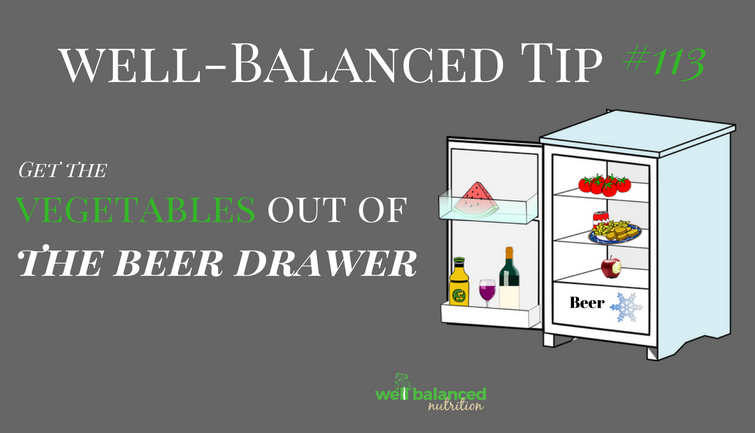
Any easy way to eat 3x as much produce: keep the veggies out of the drawers and put them at eye level instead.
*These suggestions are based off research from Brian Wansink, author of Slim By Design.
Food for thought:
- Which fridge-hacks will help you the most and why?
- Have you already implemented these tricks?
- What worked well for you? Tell us in the comments below.

by Lucy | Apr 14, 2017 | Motivational Mondays
Sunday, April 16, 2017
I originally heard this phrase, “do first what is most important,” from pastor Kendrick Vinar at Grace Church. It applies to all parts of life. Especially important when we are distracted by shiny objects all day, every day. (Yea, I’m looking at you Pinterest and my shiny new iPad)
Often, folks tell Kristen or me about how they want to live healthier, eat better, include more exercise, and manage their stress; however, they just don’t have time.
Then there are examples like a Jeanie. Jeanie is a dental hygienist at a busy community dental clinic and has been trying to lose weight for the past six months. Each time we meet, Jeanie has a new kitchen tool or smartphone application that is going to fix all her unhealthy habits. Then, the next month there is another new program or app that she’s found. Most of these tools have helped her figure out what is not going to work. It wasn’t until the celiac diagnosis that inspired Jeanie to make some real some changes. For those of you unfamiliar with this disease, Celiac disease is an autoimmune condition that damages the small intestine after ingesting gluten. It occurs in 1 out of 133 American’s – about 1% of the population – and has contributed to some of the gluten-free craze, which is currently sweeping our nation.
Back to Jeanie’s story, after being diagnosed she quickly made many changes to her schedule to make time to cook, which she previously assured me she had no time for. She found support groups and contacted her favorite dietitian to get started. Then, she bought a cookbook with a gluten-free meal plan to help learn how to cook/eat without gluten. For her health, Jeanie knows this diet and lifestyle change needs to become permanent, unlike previous efforts that have come and gone. That’s why she has put this at the top of her priority list and made taking care of herself and her health most important during this transition.
Too often, I see people putting their health at the bottom of the proverbial to-do list.
| She has put this at the top of her priority list and made taking care of herself and her health most important during this transition. |
Food for thought:
What is at the top of your priority list? That’s easy to figure out by looking at what is on your calendar or to-do list.
What habit or shiny object is currently taking your time or energy from focusing on your health?
If you gave up a “bad habit” during the Lenten season, do you really need to re-introduce that habit, food, or beverage just because today is Easter?
Do you first what is most important.

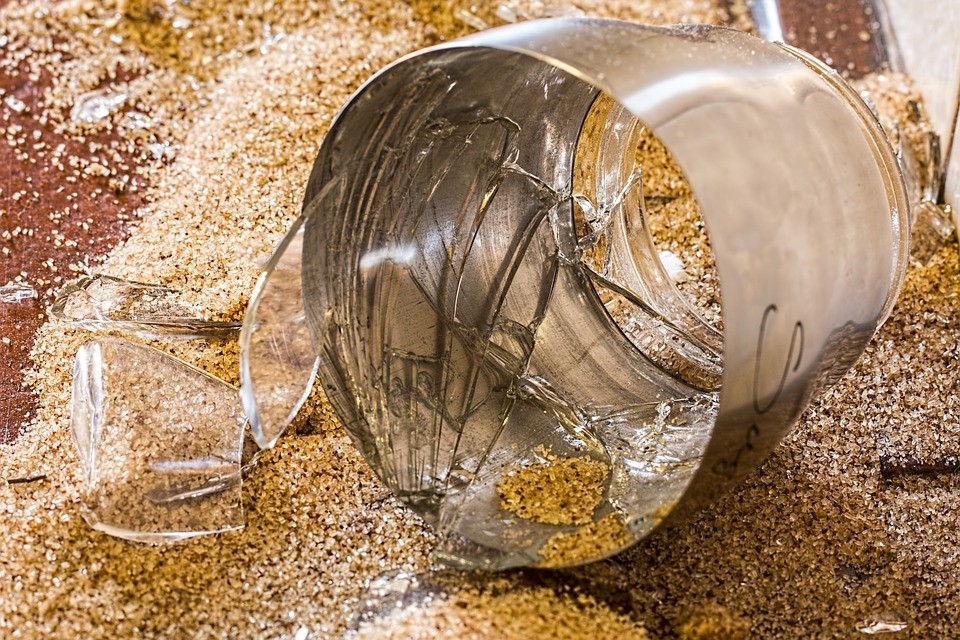
by Lucy | Feb 22, 2017 | Well Balanced Wisdom
We’ve been talking about whole grains this month and this is the last post in this series. If you missed the first 3 posts, you can read them here: Not all carbs are bad: whole grains and heart health part 1, You’ve been challenged | whole grains and heart health part 2, and 4 delicious swaps | whole grains and heart health part 3.
The food industry has definitely caught on to how awesome whole grains are for us and they aren’t shy about boasting the whole grains goodness in their products. The trouble is that between the marketing and super sizing we can be fooled into making the following mistakes.
Mistake #1: Being misled by the front of the box.
Quick story: I used to enjoy grocery shopping…finding all the new foods in the grocery store, leisurely reading labels and so forth. Then I had kids. Now grocery shopping is different. I get in and out as quick as I can. I still read all the labels but it’s more
exhausting than exciting. So, the other day I was grocery shopping with the kids and I picked up this spaghetti. We had already been in the store too long and the kids were getting really antsy so I didn’t have time to truly analyze it until I was home.
When something says 100% whole grain, that’s a good sign. But what I didn’t notice that day at the store was it said 100% durum wheat which is NOT the same as 100% whole wheat. Ugh. I got tricked! In the picture below you can see the difference, but unfortunately for me, I missed the one that said whole wheat until I went back to the store another time. This goes to show, you must have a keen eye for reading the food labels. Be careful not to get thrown off by things that appear to be something that they are not.
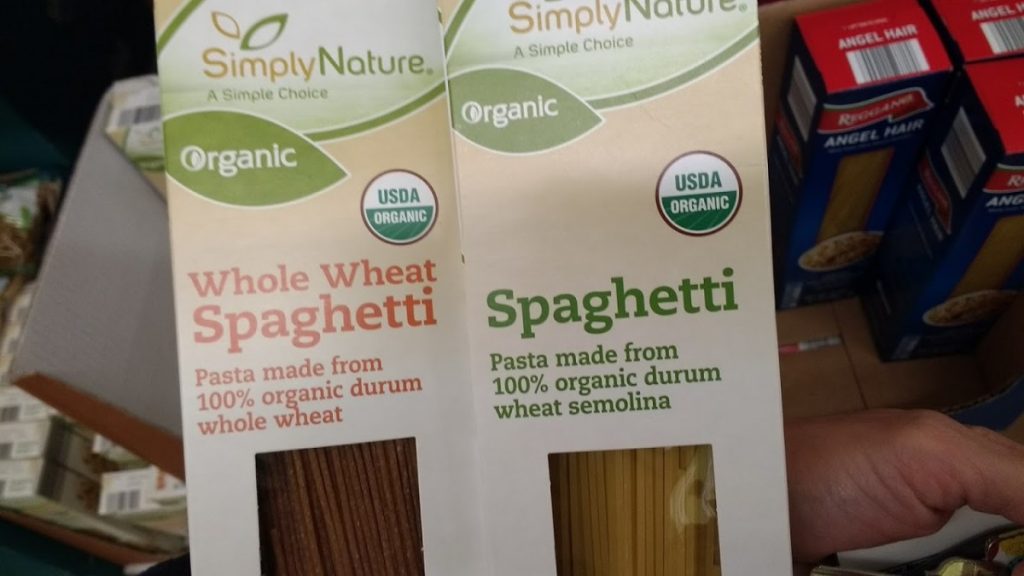
Mistake #2: Assuming all foods that contain whole grains are healthy.
According to Harvard’s Nutrition Source website, one study revealed that the whole grain stamp isn’t a good way to identify healthy whole grains.
 “The stamp, while designed to steer consumers towards healthy whole grains, actually identified products that were low in trans fats but higher in sugar and calories than whole grain foods without the stamp.“
“The stamp, while designed to steer consumers towards healthy whole grains, actually identified products that were low in trans fats but higher in sugar and calories than whole grain foods without the stamp.“
The FIX for the first two mistakes: First, we encourage you to embrace more natural whole grains. As for bread and packaged items, the ingredient list is the best place to gather your information, not the front of the package where marketers try to entice you with health claims or this fancy stamp. Look for whole grains that are high in fiber with few ingredients. The first ingredient should say “whole.” Ideally, the item should not have many added sugars.
(Mini commercial break: We help our clients do this kind of label reading at the store! Ask about our grocery store sessions.)
Mistake #3: Eating too much… because whole grains are good, right!?
Well, yes but size still matters. There is such thing as too much of a good thing. We all know that eating a ton of bread is not good for us, so this visual way of thinking about portion sizes can be really helpful. You wouldn’t eat more than 2 slices of bread at one meal, right?
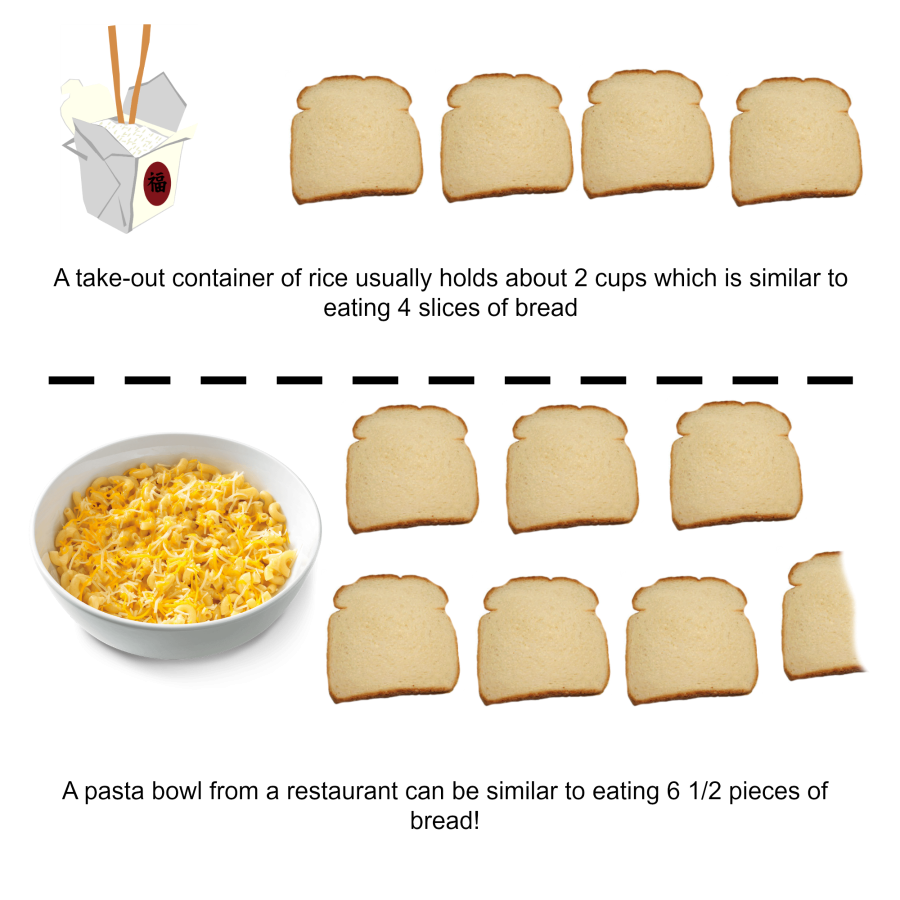
The FIX: Keep your portion sizes small with whole grains, 1/2 cup is usually plenty when it’s balanced out with other foods. Start small on your plate and always listen to your body. Let it tell you to get more or to stop eating.
FOOD FOR THOUGHT: Well-balanced eating can be tricky. We all make mistakes!
What was your biggest take-away or ah-ha from this whole grain series?
What is one thing you can apply to your life today?
Thanks for reading! If you enjoyed this, feel free to share with a friend!
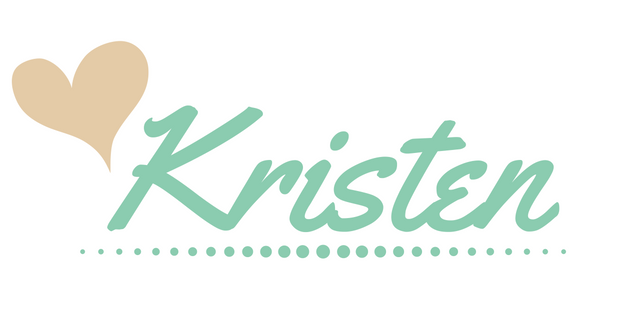
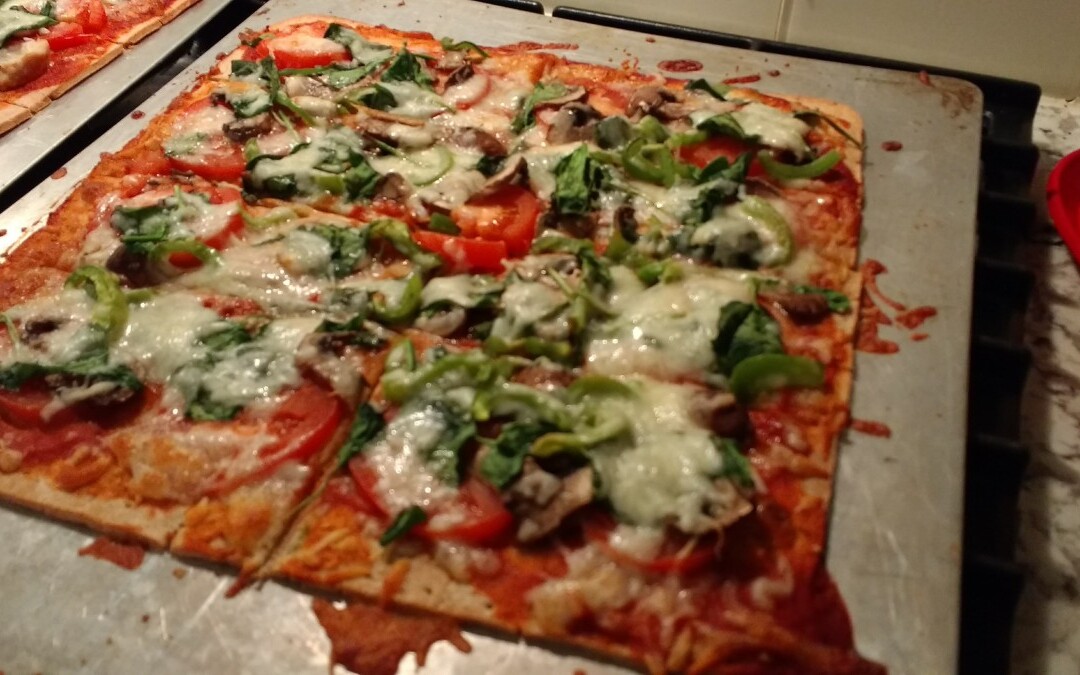
by Lucy | Feb 15, 2017 | Well Balanced Wisdom
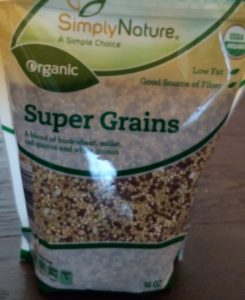
Every Wednesday this month we are talking about whole grains because of their connection to good heart health. If you missed the first two posts check them out: Not all carbs are bad: whole grains and heart health part 1 and You’ve been challenged | whole grains and heart health part 2. Today, I share 4 delicious whole grain swaps.
Last week, I didn’t just challenge you, I accepted the challenge myself. I was pumped when I found these Super Grains at Aldi! It is a mixture of millet, buckwheat and quinoa – all gluten-free whole grains. I’ve had quinoa but never millet or buckwheat. So, I tried them out! I simply prepared the grains as directed, then added them to stir-fried vegetables. Voila! Pretty tasty!
SWAP #1 Replace white rice with brown rice or a super grain blend. 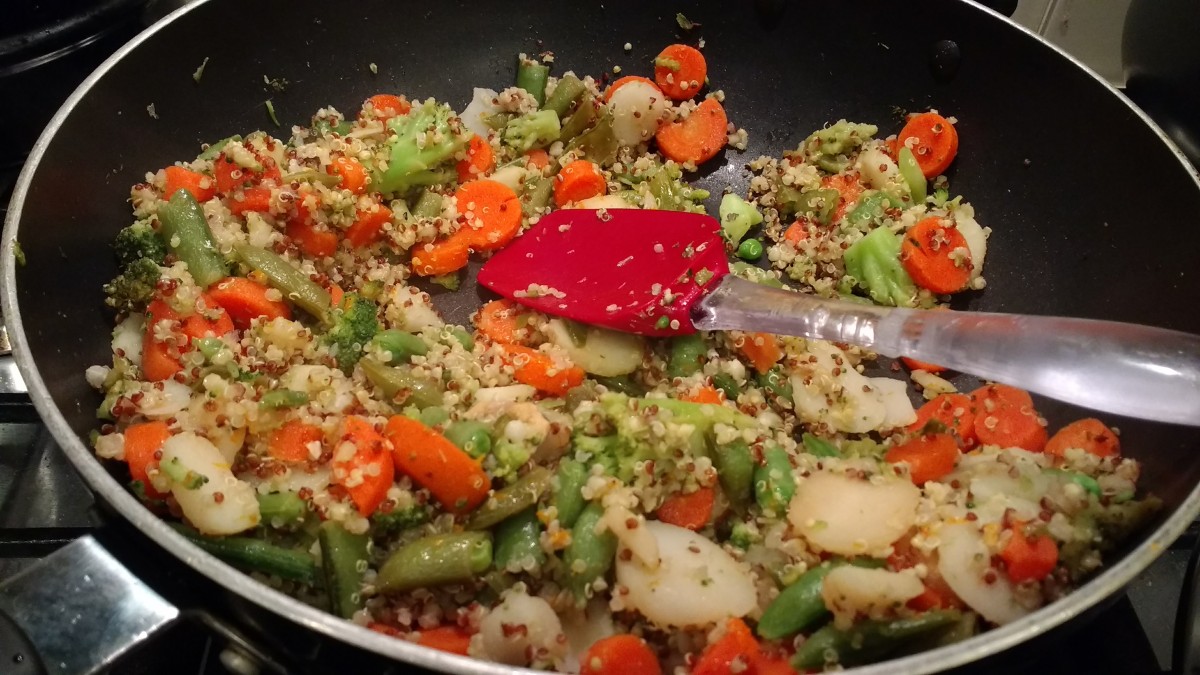
I also had the Super Grains for breakfast with some cinnamon, almond milk and maple syrup. It was delish!
How about you? Did you get a chance to try out a new whole grain? If you didn’t try something new, I hope you’ve checked out your local grocery store to at least see what is available. I know it’s not easy to incorporate something new into your diet. So, I wanted to highlight some more common options you can SWAP OUT.
That’s right. Take those refined grains and just swap them with nutrient-rich, heart-saving whole grains. These pictures prove just how delicious whole grains swaps can be.
At my house it’s pizza night every Friday. When we make our own at home we use a store bought whole wheat crust (and use lots of veggies).
SWAP #2 Buy or make a whole wheat pizza crust.
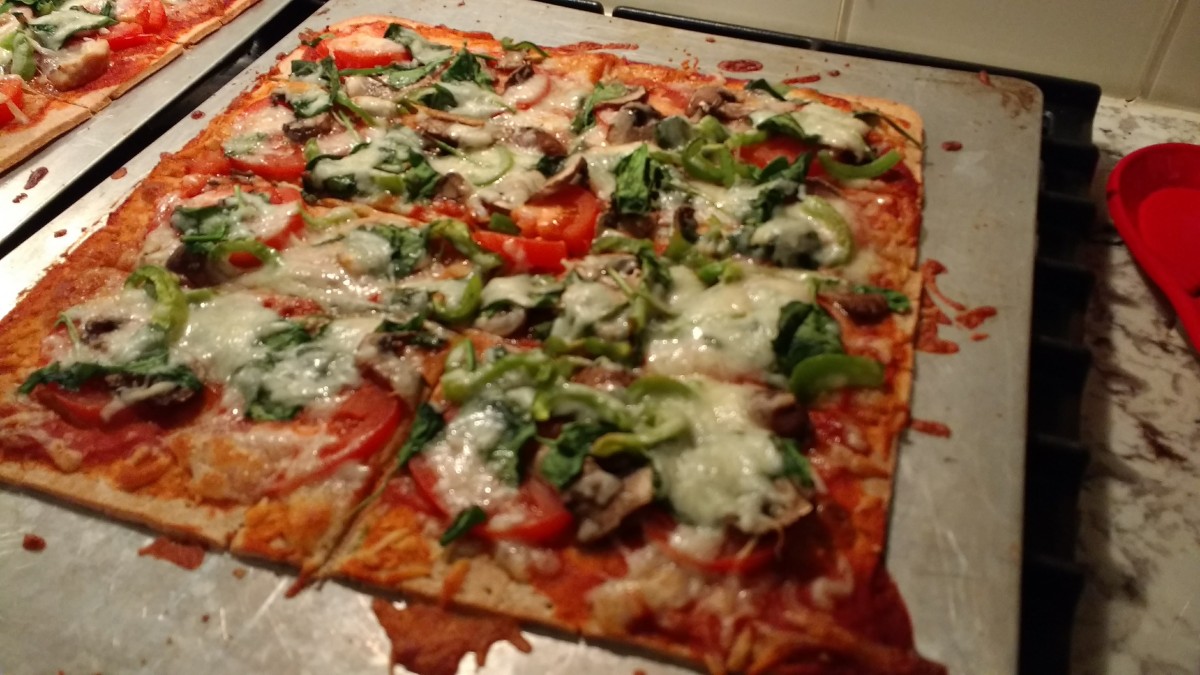
SWAP #3 Buy whole grain/whole wheat bread products. One day last week my husband made these delicious burgers and we ate them with whole wheat buns. They were as good as they look.
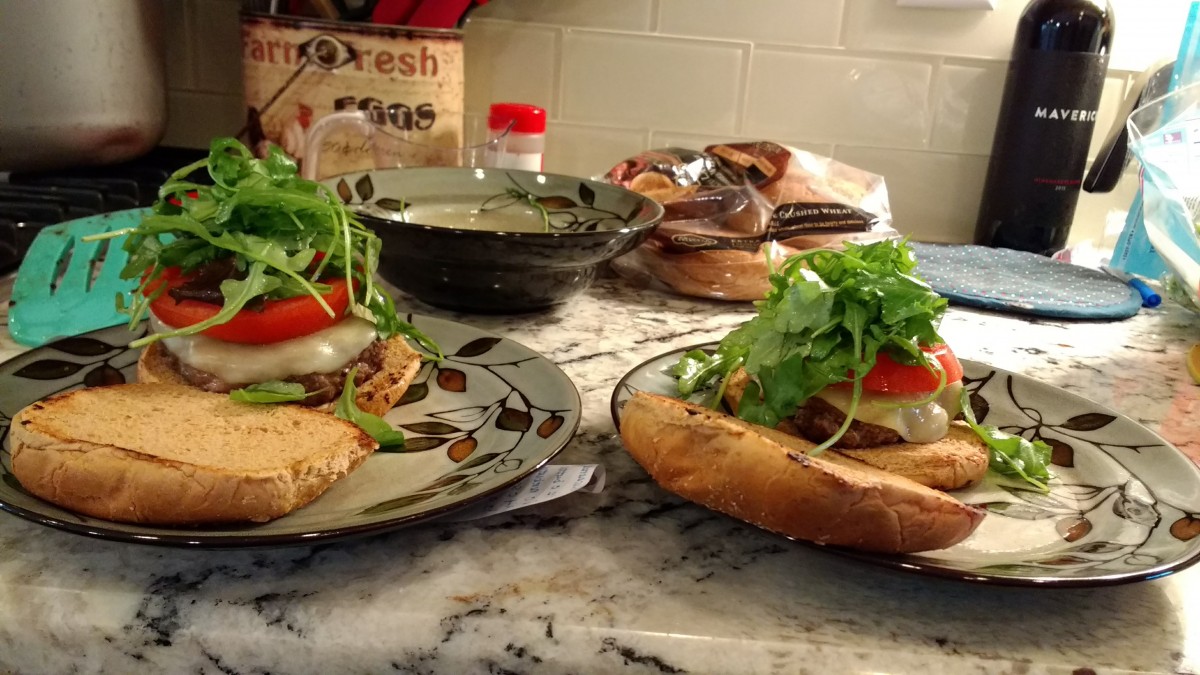 SWAP #4 Use whole wheat flour in place of white flour. I’ve been baking with whole wheat flour or whole white wheat flour for quite some time and I’ve never been disappointed. These are almond butter cookies made with whole wheat flour plus a little almond meal.
SWAP #4 Use whole wheat flour in place of white flour. I’ve been baking with whole wheat flour or whole white wheat flour for quite some time and I’ve never been disappointed. These are almond butter cookies made with whole wheat flour plus a little almond meal. 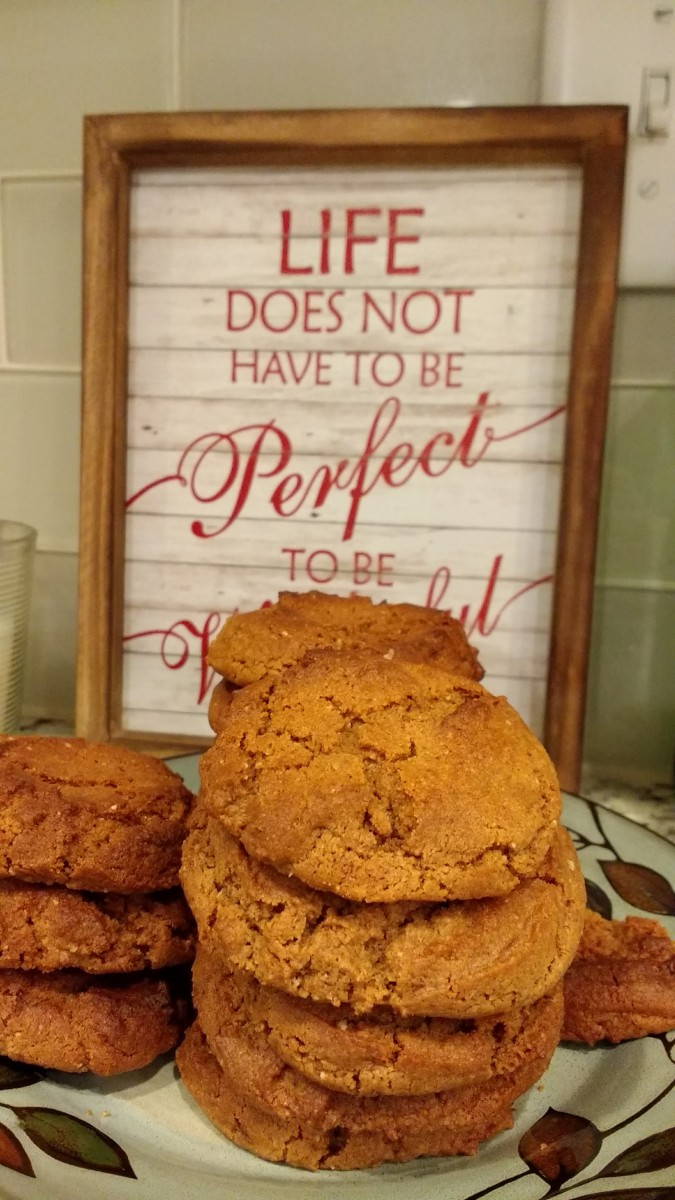
Stay tuned! Next week I’ll talk about how to truly tell what is a whole grain and what is not. It’s confusing sometimes. I’ll show you the item that completely tripped me up!




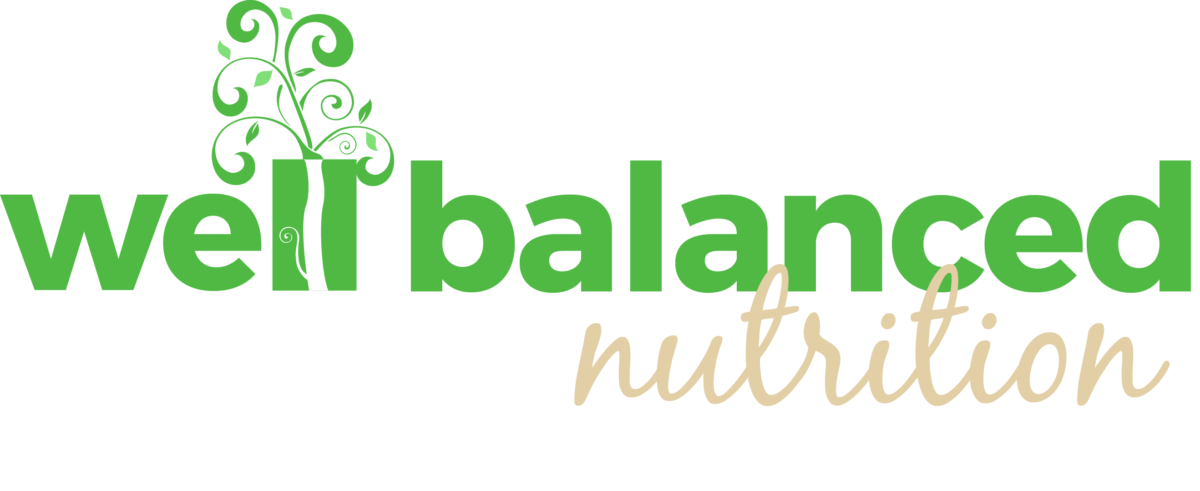







 “The stamp, while designed to steer consumers towards healthy whole grains, actually identified products that were low in trans fats but higher in sugar and calories than whole grain foods without the stamp.“
“The stamp, while designed to steer consumers towards healthy whole grains, actually identified products that were low in trans fats but higher in sugar and calories than whole grain foods without the stamp.“




 SWAP #4 Use whole wheat flour in place of white flour. I’ve been baking with whole wheat flour or whole white wheat flour for quite some time and I’ve never been disappointed. These are almond butter cookies made with whole wheat flour plus a little almond meal.
SWAP #4 Use whole wheat flour in place of white flour. I’ve been baking with whole wheat flour or whole white wheat flour for quite some time and I’ve never been disappointed. These are almond butter cookies made with whole wheat flour plus a little almond meal. 